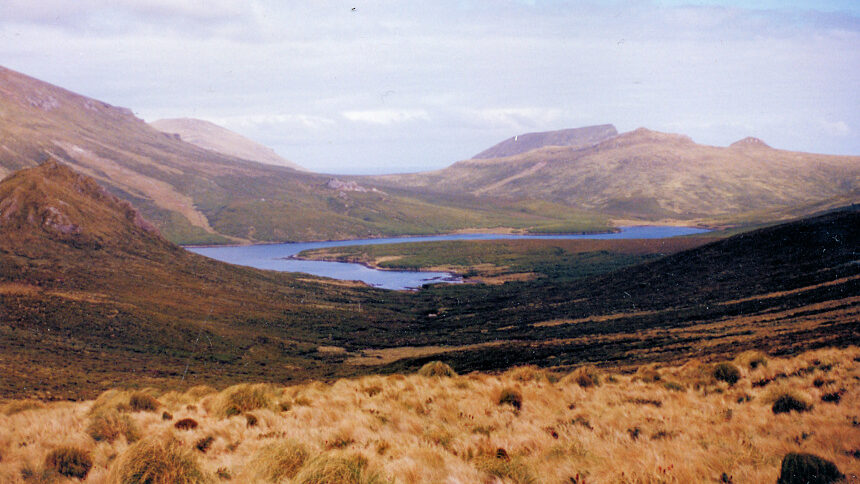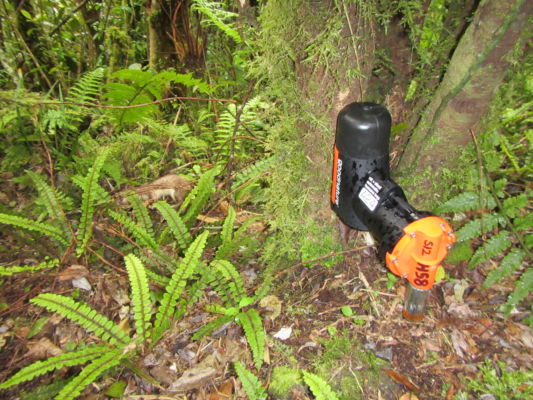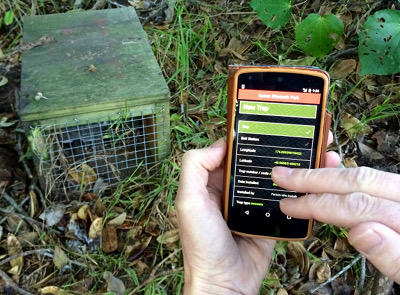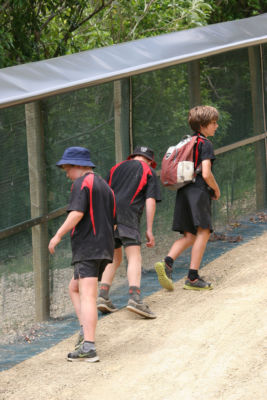The Journal of Ornithology has just published a review of the conservation tools being developed for New Zealand’s Predator Free 2050 eradication programme. The paper’s authors, Elaine Murphy (DOC and Zero Invasive Predators – ZIP), James Russell (ZIP and University of Auckland), Keith Broome (DOC), Grant Ryan (Cacophany Project) and John Dowding (DM Consultants) are actively involved in exploring new techniques and technologies, so are ideally placed to explain the options and challenges ahead of us.

So how are we going and what new developments are on the horizon?
“The endemic fauna of New Zealand evolved in the absence of mammalian predators and the introduction of the latter has been devastating. There have been numerous avian extinctions and 80% of the extant native avian taxa are currently threatened or at risk of extinction. Declines continue, and a fundamental change in predator management is required.”
Firstly, some background on what we’ve already achieved.
“Driven by the vulnerability of its threatened species to mammals, New Zealand has a history of eradicating the latter from its islands. At the start of the twentieth century large introduced mammals, e.g. goats and pigs, were removed from some islands around the coast. From the middle of the twentieth century, techniques were developed to eradicate small introduced mammals (mainly rats) from small islands; as these techniques were refined, larger islands were cleared, culminating in the eradication of Norway rats from 11,300-ha Campbell Island. By 2015, one-third of New Zealand’s offshore islands, comprising 10% of the total offshore island area, were free of mammalian predators.”
Even these successes have their ongoing challenges however – particularly the risk of reinvasion.
“Detection and removal of invaders to ensure that islands remain predator free is an ongoing issue. From 2000 to 2017, there were no fewer than 387 suspected or actual pest incursions on predator-free islands, with 249 (64%) of the incidents involving rodents (DOC, unpublished data). Some of these incursions were costly to deal with, [e.g. NZ $200,000 to remove three stoats from Kapiti Island (DOC, unpublished)] and some resulted in catastrophic declines of sensitive translocated species. Detection of predator incursions can be difficult, and better methods are needed.”
Mainland ‘islands’ also, increasingly have a role to play in protecting endangered species.

“New Zealand has also created a network of ‘virtual islands’ on the two main North and South Islands. These sites surrounded by predator-proof fences are analogous to offshore islands, with predators eradicated within the fenced area and reinvasion managed. Populations of sensitive bird species have also been established in these sanctuaries, although by 2015 they comprised only 0.25% of the total land area of the North and South Islands.”
All of which leaves 99.75% of our two main islands yet to be made predator free. No single technique is likely to be successful on its own – so what have we got in the toolbox?
“Existing techniques are being refined and new tools are being developed. Research on new toxins, including those with potentially higher species specificity, is under way, and novel baits and toxin-delivery devices are being developed.”
Toxins
Toxins are likely to play an important part in eradication.
“New Zealand has become well known for its successes in removing pests from islands. The main technique used for eradicating rats from uninhabited islands has been aerial baiting with the anticoagulant toxin brodifacoum. Because second-generation anticoagulants may bioaccumulate in sub-lethally poisoned animals, this technique would not be suitable for widespread use on the New Zealand mainland. It may, however, be useful within discrete fenced areas or on peninsulas.”
Unlike brodifacoum, 1080 doesn’t bioaccumulate.
“1080 is an acute toxin and not normally thought of as suitable for eradication, but with prefeeding, improved bait quality, multiple applications, and better delivery mechanisms, it may be a useful tool. Recent studies at local scales have indicated that the eradication of possums and rats may be possible.”
Rat-specific toxins are also being investigated.
“A rat-specific toxin, norbormide, is also currently being investigated by two research groups in New Zealand. Norbormide is highly toxic to Norway rats and moderately so to ship rats, compared to other mammals or birds, but palatability was found to be a problem in field trials. Trials are currently being undertaken to find a more palatable and consistent formulation.”

Para-aminopropiophenone (PAPP) is being developed as a humane toxin for stoats and feral cats.
“Carnivores appear to be much more susceptible to PAPP than birds, so it potentially has higher target specificity, at least in the New Zealand context. A PAPP paste has been registered for use in fresh meat baits, but this method of delivery is labour intensive and unsuitable for landscape-scale control. A bait containing PAPP is currently being developed for aerial delivery, which would allow widespread control of mustelids.”
And then there’s the option of firing toxin at targeted pests.
“Resettable toxin-delivery devices are also being developed to control stoats, rats and possums. One such device works by firing a paste containing a toxin on to the belly of a pest after which the device resets. When the pest grooms the paste from its fur, it ingests the toxin. Different toxins can be used depending on the pest to be controlled. A small-scale field trial for possums using zinc phosphide paste and a field trial for stoats using a paste containing PAPP both resulted in significant reductions in numbers of the target pests.
‘Paint ball’-style delivery of toxins is also being investigated in Australia and New Zealand (Cacophony Project 2019).
“Initial tests suggest that this method could be accurate for rats up to 10 m away, allowing control of animals that may not approach or enter traps, and be more flexible at targeting a range of pests over large areas. Unmanned aerial vehicles (drones) may have a range of applications, including in situations where highly targeted delivery of toxic baits is required.”
Traps

Trapping predators is also becoming more sophisticated – and can be carried out in urban areas, for example, where toxins may not be suitable.
“Servicing large numbers of traps (especially in remote areas) is expensive, however, and resetting mechanical traps capable of multiple kills have been developed for stoats, rats and possums. New trap designs are also being investigated to increase capture rates. All current traps have some form of mechanical housing to exclude non-target species, but these housings may sometimes deter target animals. When on-board technology can discriminate between target and non-target species in real time, a range of new trap designs becomes possible. One design being investigated is an open-architecture trap that has three sides open and may be more effective against wary or neophobic predators.”
Monitoring equipment and artificial intelligence (AI) developments also offer new possibilities.

“Research is under way on the use of a thermal camera, in conjunction with AI, for monitoring of predators. The thermal camera is two to five times more sensitive than standard trail cameras designed for larger mammals, and the AI currently identifies rats, stoats, and possums with high accuracy (Cacophony Project 2019). The ability to distinguish between a predator and a bird is expected to get close to 100% accuracy; with the AI running in real time on the camera it can activate nearby devices, such as bait or lure dispensers, toxin-delivery devices, or traps. Another device under development (PAWS® pest identification sensor pad) will enable remote surveillance and reporting of predator incursions, allowing a more rapid response; the device identifies predator species from footprints on a sensor pad, and distinguishes them from native species.”
These new devices can only work, however, if predators are attracted to them. Good lures are crucial.
Lures and repellents
Both food and sensory lures are being investigated. Five compounds that elicit a similar, or stronger, response in rats than the standard lure (peanut butter) have been identified.
“These are now being developed into long-lasting mediums, that will be cheap and convenient to use. The use of semiochemicals (including pheromones) is also being investigated. Compounds attractive to stoats, possums and rats are being identified from scent glands and urine. Ultrasonic rat pup calls have also been effective at increasing catch rates of rats and when they are used in combination with pheromones, catch rates may increase further. The use of auditory lures to attract predators has previously received some attention and this is an obvious area for further research. Automatic lure dispensers are also being developed for use with resetting traps and monitoring devices. These deliver small quantities of a palatable paste for 4–12 months.”
Repellents may provide a means of reducing non-target impacts from poison baits.
“Most non-targets are birds, and some work has been undertaken on the use of anthraquinone to deter kea from baits. To date, repellents that deter birds also appear to reduce bait acceptance by rodents, but further research in this area is warranted.”
Barriers
The authors also point out that eradications may be achieved in stages, meaning natural and artificial barriers will be needed to protect areas already cleared.
“Current predator-proof fences are generally effective, but can be expensive and visually obtrusive, so low predator fencing is being investigated as a lower cost, more acceptable option. ‘Virtual barriers’, consisting of multiple lines of traps only, are being tested as a means to prevent the reinvasion of peninsulas and light is also being investigated as a deterrent. In some areas, gaps in fences will be necessary for the passage of vehicles; trials have been undertaken to test the ability of electric grids to deter possums, stoats and rats from passing through these openings (ZIP 2018). Effective barriers are likely to use a variety of these and other approaches in combination.”
Genetic technologies and social licence

“Generally, there is widespread national support for PF 2050; less than 5% of New Zealanders believe doing nothing is an option and 84% agree that pest species are a significant conservation problem, while only 14% think that enough pest control is being done. Current techniques will probably be inadequate to effect nationwide eradications, and new tools (possibly based on genetic technologies) will probably be required. Regulatory hurdles will need to be overcome, and community consultation and support (social licence) will be required throughout the programme.”
The use of some new technologies may not be supported by the majority of New Zealanders. Not every new idea will necessarily be adopted.
“Surveys of New Zealanders to date have found mixed support for novel predator control technologies such as species-specific toxins, Trojan female techniques, and gene drives, but have also revealed indecision because of the current abstract nature of these largely undeveloped technologies. The ability to ‘reverse’ some technologies may be critical to both public acceptance and to fulfil international obligations, in order to address the possibility of an eradication technology finding its way into the native range of an animal considered a pest in New Zealand but not elsewhere, e.g. the brushtail possum in Australia.”
The authors list some of the technical, social and organisational challenges that remain:
- Finding breakthrough eradication technologies to supplement or replace existing tools.
- Deciding which technologies have potential and should be pursued, and which should be abandoned.
- Scaling up existing technologies to much larger areas.
- Knowing when eradication has been achieved, given the difficulty of detecting predators at very low densities.
- Dealing with any unanticipated ecological consequences of the proposed eradications, such as competitive release.
- Deciding the level of public support that indicates social licence has been obtained, especially in a diverse multicultural society.
- Integrating the efforts of community groups and individuals into programmes run by local and central government agencies.
“There is no doubt that the general concept of reducing the suite of predators in New Zealand, and the establishment of the PF 2050 programme in particular, have already spurred increases in both innovation and investment. Maintaining this momentum over 30 years will be critical, and there will be a corresponding need to renew the social licence as research provides new tools.”
The full paper is published in the Journal of Ornithology. Only the abstract is freely available online to non-subscribers:

